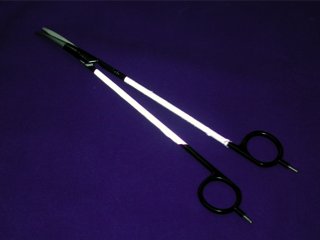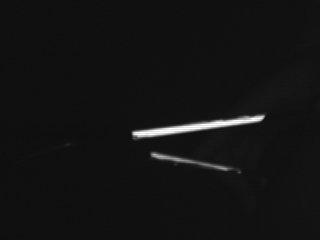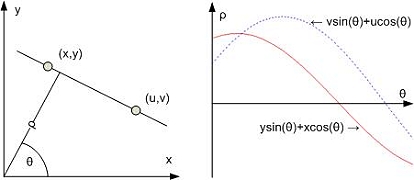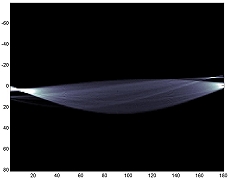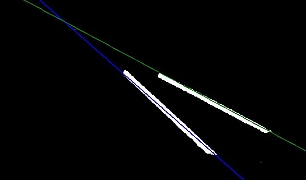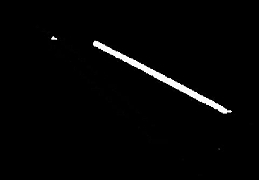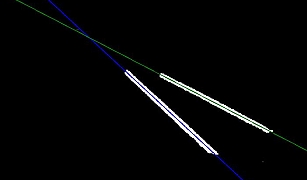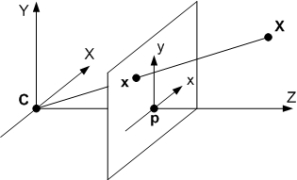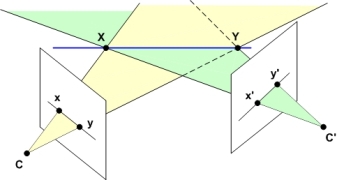Tracking Scissors using reflective Lines
Student: KatharinaPentenrieder
Supervisor: Dipl.Inf. Martin Bauer
Professor: Prof. Gudrun Klinker
Submission date: 15.01.2005
Student Project (Diplomarbeit)
This student project is about tracking a pair of scissors using retroreflective lines at each leg.
Overview
Goal of the project is to track the threedimensional position of the instrument using a pair of stereo cameras.
To reach this goal, the legs are covered by retroreflective material and the camera is surrounded by infrared flashlights. This results in an easily recognizable image of only the legs. Finding the lines in both camera images can be used to get the threedimensional position of the instrument. Hough Transformation can be used to search for the lines.
Proceeding
Detecting Lines - Hough Transformation, Pixel Elimination and Least Squares
Each point of the x-y-plane is represented by a sinusoidal curve in the ρ-θ-plane. Collinear points are mapped onto curves that have a common point of intersection. Therefore lines in the x-y-plane can be detected by counting the number of intersecting curves in each point of the ρ-θ-plane. This is done via an accumulator array. The accumulator maxima represent the most likely pairs (ρ,θ) of collinear points in the original x-y-plane.
To find both lines the Hough Transformation is applied twice, for each line separately. After the first accumulation the pixels around the detected line are eliminated to create a new image for the second transformation. Finally the Least Squares Method is used to get an optimal result.
3D-Positioning - Camera Calibration and Line Triangulation
To determine the 3D-position of an object several steps are necessary. First the relationship between a world point and an image point needs to be expressed. This can be represented as x = PX where P is the camera matrix. P is retrieved via camera calibration.
Secondly - given two cameras - the 3D Position of a line is determined using triangulation. C and C' are the two cameras. Their relative position is represented by a rotation matrix R and a translation vector T. Given two points on the line in each camera frame two planes can be calculated which intersect in the desired 3D line.
Tracking Lines
Tracking over a series of images can either be done directly after the lines have been found via Hough Transformation or it is postponed until the 3D position of the object is determined. One method of tracking could be to move a template vector along normals of the determined line and search for an optimum of conformance with the underlying image. The template vector represents a gray value profile of the line.
Documents
Literature
- D. Forsyth, J. Ponce: Introduction to Computer Vision
- Richard O. Duda, Peter E. Hart,
Use of the Hough transformation to detect lines and curves in pictures
Communications of the ACM, Volume 15, Issue 1 (January 1972)
- J. Illingworth, J. Kittler: A Survey of the Hough Transform
- L. Mai: Introduction to Computer Vision: Hough Transform
- more Hough Transform related publications
- A. Zisserman and R. Hartley, Multiple View Geometry in Computer Vision, Cambridge University Press, 2000
- A. Blake and M.Isard, Active Contours, Springer Verlag, 1998
